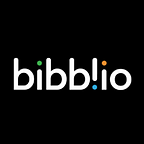A new goal for digital publishers in 2018: your loyalty metric
What recirculation can tell you about user loyalty and how you can increase it
If there’s one thing that the last year has confirmed, it’s that for the publishing industry the ‘duopoly’ is real. In a recent study, Parse.ly reported that, as well as hoovering up practically all ad revenue growth, about 70% of all external referral traffic to media sites comes from Google and Facebook too.
This iron grip on digital ad revenue makes publishers vulnerable, and many are trying to move away from being purely ad-supported businesses. As they strive to establish more diverse revenue streams, including premium options such as subscription, it’s vital for publishers to cultivate a more engaged and loyal audience.
But how can you tell whether you’re doing the right things to turn your one-time Facebook visitors into devoted regulars?
Recirculation
An insightful way of measuring your success in creating a loyal audience, your ‘loyalty metric’, is looking at recirculation.
In a recent MediaShift article, Andrew Sweeney, marketing content manager at a digital analytics company, defines recirculation as the percentage of users who visit another page of your site after they finish reading their first article. The best way to understand the metric is as the inverse of Google Analytics’ bounce rate.
“Recirculation numbers show you whether your users are hungry for more satisfying content on your site instead of skipping away for their next bite.”
— Andrew Sweeney
By focusing on recirculation, Andrew writes, you can not only examine whether or not an article is performing well on average, but you can also begin to understand which pages your users are likely to visit next.
Turning knowledge into action
Knowing something is one thing, getting results is another. Being aware of which is the best follow-up article is interesting, but it only becomes useful if you can turn that knowledge into effective action. One simple way to do this is by making life easier for your users: add the best articles as links on your pages.
Displaying relevant links in the sidebar, inline or at the bottom of each page will increase your recirculation numbers. Users will engage more with your content and ‘spend’ more time with your product and brand. This should kick off a powerful, positive feedback loop of them returning to your site more often.
Andrew writes that adding these ‘read more links’ to your article pages sounds obvious, but asks “when was the last time you considered how well you use these links?” These shouldn’t be an afterthought — they’re an important route to higher revenue.
Choosing the best links
Selecting the best links to include on every article page is not an easy task. If you look at the amount of content that publishing sites produce, and consider subtly changing user behaviour on top of that, then it’s clear that finding the best link for a page isn’t simple. In fact, you should consider whether it’s even a job for a human.
Links chosen by humans have two main drawbacks. Firstly, they’re static or ‘hard-coded’. This means that if your audience’s preferences change, or you add content to your site that’s more appropriate as a link on a particular page, those links do not update. They can quickly go stale. Secondly, humans aren’t always able to spot what will perform best as a related link — our intuition can often let us down.
Usually a sophisticated algorithmic solution that can test links to find the most effective, and then update them as your audience and content changes, will be better at the task of picking links than any person. When you consider the worth of your editorial staff’s time, it will often be cheaper too. This solution is known as a content recommendation system — although you need to be careful, as some ad-networks try to pose as content recommendation systems too.
Highly recommended
A good recommendation system selects links based upon data insights about the content, audience behavior and the individual user. The system adapts as new content comes in, the interests of your readership changes and the goals of the individual users become clearer.
The ability to adapt links based on the goals and preferences of the individual user is a key advantage of algorithms — it’s also something that a human could never do at scale. A good recommender system will adapt and get better at displaying the right content to the right user. The right content in this context is content that delivers both high recirculation numbers and highly engaged behavior on the suggested pages.
If you don’t hold any data about new or returning users, then using the insights you’ve gathered in a specific ‘session’ (i.e. period of time spent on your site by a user) can also be useful. A single session can cover an extended time period, e.g. a day, and the system could use a device ID or IP address to connect a session with a particular user.
Doing the right thing
It’s now relatively simple to choose an adaptive system that inserts engaging and relevant articles onto your pages without you having to lift a finger. This is a simple way to improve your recirculation metric, and leads to engaged and happy users contributing more to your bottom line.
Doing the right thing for your audience starts with publishing creative and unique content, but don’t leave it there. Make sure you’re measuring the right things and give your content the chance it deserves to find an audience by providing great recommendations on every page.
Robbert van der Pluijm
Head of Bibblio Labs
Bibblio boosts engagement and revenue by suggesting the best content to your users from across your site. Visit us or follow us on Twitter and LinkedIn.
Originally published at bibblio.org.
